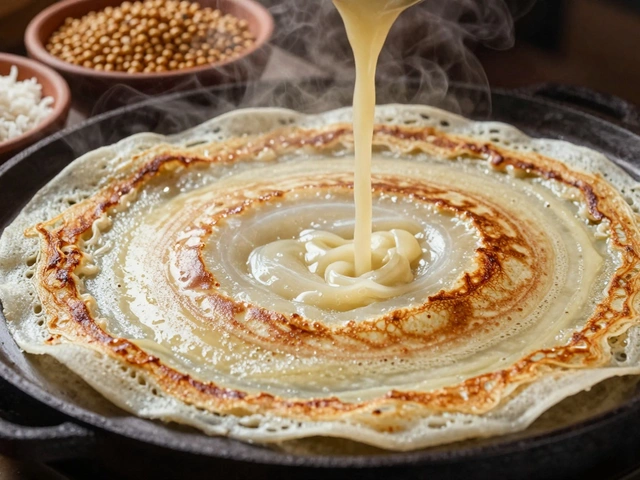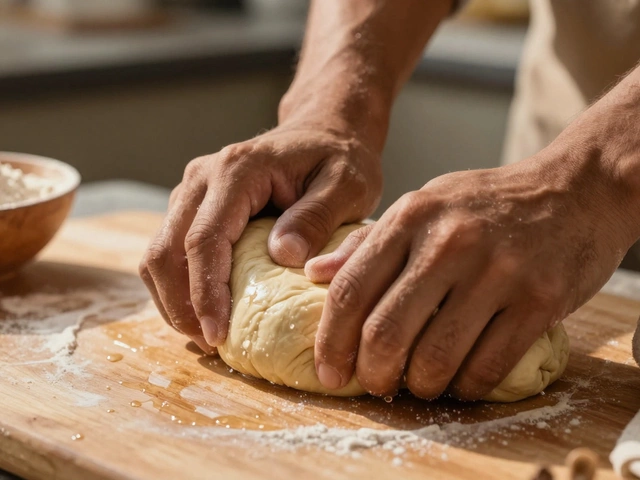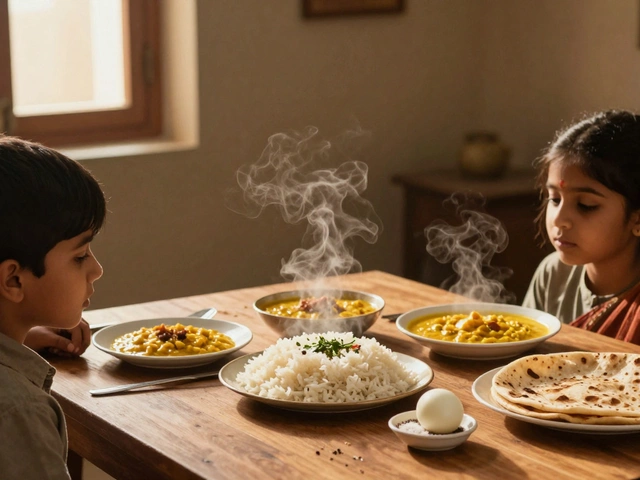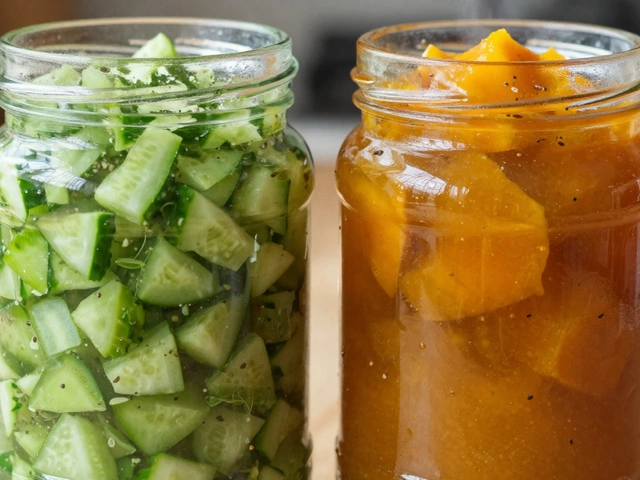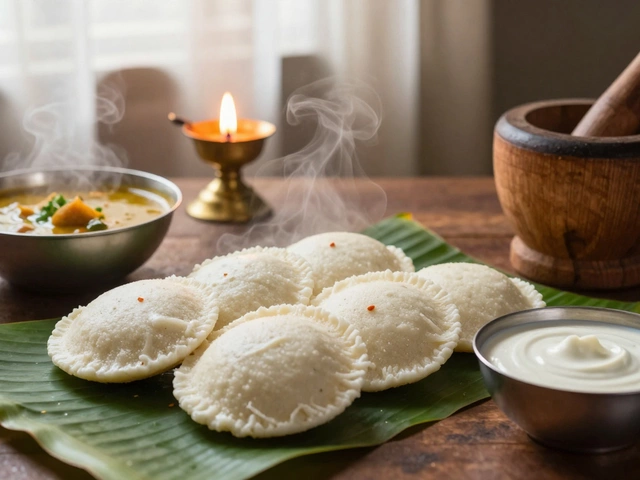Standing in a bustling Indian restaurant, the aroma lingering in the air pulls you in a dozen directions. The menu flashes with creamy curries, grilled platters, spicy stir-fries, and towering biryanis. The real struggle? Picking just one entree when everything begs to be spooned up and savored. If you've ever been caught staring at a menu, hungry and indecisive, you’re not alone. The hunt for the best Indian entree divides foodies everywhere, sparking heated debates at tables and group chats. It’s not just about taste—it’s about comfort, celebration, childhood nostalgia, and dishes that make you want a second helping before you finish the first. What steals the crown? The answer might surprise you.
Why Choosing the Best Indian Entree is Tougher Than You Think
Trying to name the best Indian entree is kind of like picking a favorite song—impossible, and it depends on the moment. Part of the challenge comes from India’s wild food diversity. With 28 states, each boasting its regional flavors and techniques, you’re dealing with a menu that stretches from the coconut-laced curries of Kerala to the smoky tandoor delicacies of Punjab. Even within one state, recipes jump between kitchens. Your friend's butter chicken from Delhi? Not quite the same as the one from Mumbai. Ask five people, and you’ll get ten opinions. Still, a few contenders consistently pop up at the top. Dishes like chicken tikka masala, biryani, paneer butter masala, and dal makhani have made their way from Indian homes onto every must-try list. Each has a loyal fandom and roots that run deep.
Let’s pause on something interesting: Indian diners rarely eat entrees alone. Most meals are about mixing—spooning creamy daal over rice, scooping up gravies with naan, passing pickles and chutneys across the table. That makes Indian entrees different from the typical Western main course, which can stand alone. Indian cooking loves dialogue—a back-and-forth of flavor, texture, and color. That’s why dishes like biryani, which are meals in themselves, are so special (and why every region insists their style of biryani is supreme). Meanwhile, saucy gravies like butter chicken and chana masala get piled high with rice, and finishing them is practically a group sport.
Ordering or making an Indian main has a few unspoken tips. Look for balance: one creamy curry, one dry roasted dish, maybe something tangy for good measure. If you’re going meatless, don't think you’re losing out—some of the boldest Indian entrees are vegetarian or vegan. Pro tip? Always leave space on the plate for fresh lime wedges and a crunchy salad sprinkle. Whether you cook at home or order in, don’t hesitate to ask the auntie next door or the server at your favorite spot for their secret twist. You’ll pick up more hacks than you’d expect.
The All-Time Heavyweights of Indian Entrees
Let’s get into the real contenders. Start with chicken tikka masala—a dish that’s been called the United Kingdom’s true national food but traces its heart to North Indian kitchens. Chunks of grilled chicken bathed in spiced tomato-cream sauce, it’s comfort food with a happy, hearty kick. Legend says a homesick British officer wanted gravy with his chicken tikka, and the rest is delicious history. Move over to dal makhani, a slow-cooked North Indian black lentil stew finished with cream and butter. It’s rich, earthy, and the longer it simmers, the better it tastes—restaurants in Delhi let theirs bubble overnight.
Biryani demands attention. In Hyderabad, the rice is fragrant with saffron and cooked with bone-in lamb, while in Kolkata, you’ll find biryani seasoned with subtle sweetness and even whole boiled eggs. The Hyderabad style is so popular that Indian Railways once reported serving over 13 lakh biryani packets during a ten-day festival in 2023. And don’t forget paneer butter masala, the vegetarian darling—milky cubes of fresh cheese in a bright, buttery tomato gravy, mopped up with pillowy naan or roti. It’s the go-to for almost every vegetarian at an Indian wedding buffet (and often the carnivores fall for it, too).
For the seafood lovers out there, there’s Goan prawn curry and Kerala’s fish moilee, both bursting with coconut and the zing of tamarind or green chilies. In the west, Parsi patra ni machhi (steamed fish wrapped in banana leaves and a punchy herb chutney) offers something truly unique. If you crave something spicy and dry, Chettinad chicken and Andhra mutton curry can bring on a fire not for the faint of heart. Of course, street food mainstays like pav bhaji and chole bhature blur the lines between snack and main, sometimes stealing the show at family dinners.
All these dishes aren’t only about what’s in the pot—they have a strong story, sometimes following families for generations. If you visit Mumbai’s old Irani cafes, you’ll spot mutton dhansak with caramelized rice. In Punjab’s dhabas, slow-simmered curries and giant parathas take center stage. Food is more than sustenance—it's history, hospitality, and celebration all at once. Picking just one entree feels a bit like missing out, but those are the classic all-stars that keep plates and conversations overflowing.
The Science of Flavor: Why Indian Entrees Taste So Exciting
The way Indian mains build flavor is a science worth geeking out over. Most Indian entrees start with whole spices—cinnamon, cardamom, cumin seeds—tempered in hot ghee or oil. This unlocks deep tones that bottled spice mixes never quite capture. Fresh ginger, garlic, and chilies get pounded to a paste and tossed in next, laying a foundation so mouthwatering it'll fill your home with an instant "Is it ready yet?" vibe. A 2015 research paper in Nature found that Indian recipes are masters of avoiding similar-tasting spices in one dish; they mix dozens of distinct flavors, creating complexity you just don’t get with Western recipes that reuse similar ingredient clusters.
Here’s a fun fact: The complexity isn’t only about heat. Dal makhani, for example, skips most pungent spices but simmers with buttery richness, black cardamom, and dried fenugreek leaves—resulting in a flavor that’s smoky but mellow. The classic chicken tikka masala gets its silky finish not only from cream but also from dried fenugreek, sometimes called “Indian oregano.” Paneer butter masala and shahi curries shallow fry their base to caramelize onions and sweeten the sauce, making the meat or paneer taste richer. Even vegetarian staples like aloo gobi (potato-cauliflower curry) pop with ginger, cumin, and turmeric.
Let’s talk texture, too. Indian entrees rarely sit one-note. Biryani mixes chewy meat, melt-in-the-mouth rice, and crispy onions. Chole (chickpea curry) is all about chunky, spicy bites, while coconut-rich fish moilee gives you creamy curry and flakey fish in every spoonful. And thanks to the pairing with breads and rice—check this handy table for the classic combos—the experience gets richer still.
| Entree | Best Pairing | Common Side |
|---|---|---|
| Biryani | Raita, boiled eggs | Salad, lime wedges |
| Butter Chicken | Naan, rice | Pickles, salad |
| Paneer Butter Masala | Roti, naan | Onion salad |
| Dal Makhani | Jeera rice, roti | Simple salad |
| Fish Curry | Steamed rice | Coconut chutney |
Indian entrees also lean toward fresh ingredients whenever possible—think chopped coriander, mint sprigs, and lemon juice just before serving. Tiny details like pan-frying whole spices or adding a final dollop of ghee give each dish its signature finish.
Tips for Cooking, Ordering, and Flavor Experiments
If you’re cooking Indian at home or choosing from a menu, a little know-how can boost your entree game. Don’t be afraid of pre-made spice mixes, but if you want real depth, roast your whole spices and grind them fresh. Don’t skip marinades for dishes like tandoori chicken or paneer tikka—the yogurt and lemon soak makes proteins tender and infuses them with flavor. For curries, the secret’s always in the base: sauté onions until golden before adding anything else.
Trying to pick an entree at a restaurant? Ask about the house specialty—many chefs pride themselves on a family recipe or regional twist (like Kolhapuri chicken with extra heat or Lucknowi biryani laced with kewra water). If you’re with a group, order family style so you can sample a little of everything. Vegetarians shouldn’t hesitate: dishes like baingan bharta (smoky mashed eggplant) or tofu palak can be just as indulgent, thanks to India’s long tradition of creative, meat-free mains.
Don’t shy away from fusion. These days, Indian restaurants around the world experiment with things like paneer quesadillas or lamb curry ramen bowls. If something sounds weird but tasty, give it a shot—you might end up with a new favorite. And for a restaurant-level finish at home, add a sprinkle of kasoori methi (dried fenugreek) or a splash of cream at the end of your curry. If you want to dial down the spice, stir in some yogurt or coconut milk. Love it hotter? Drop in a slit green chili or state-specific spice blends, like Malvani masala from Maharashtra or Chettinad masala from Tamil Nadu.
Here’s a final tip: The best Indian entree is often whatever brings people together at the table. Food in India means sharing—passing new tastes, telling old stories, and letting everyone take just a bit more before the last piece is gone. There’s no single winner, but plenty of delicious contenders, so all you need is an adventurous palate and an empty plate.
